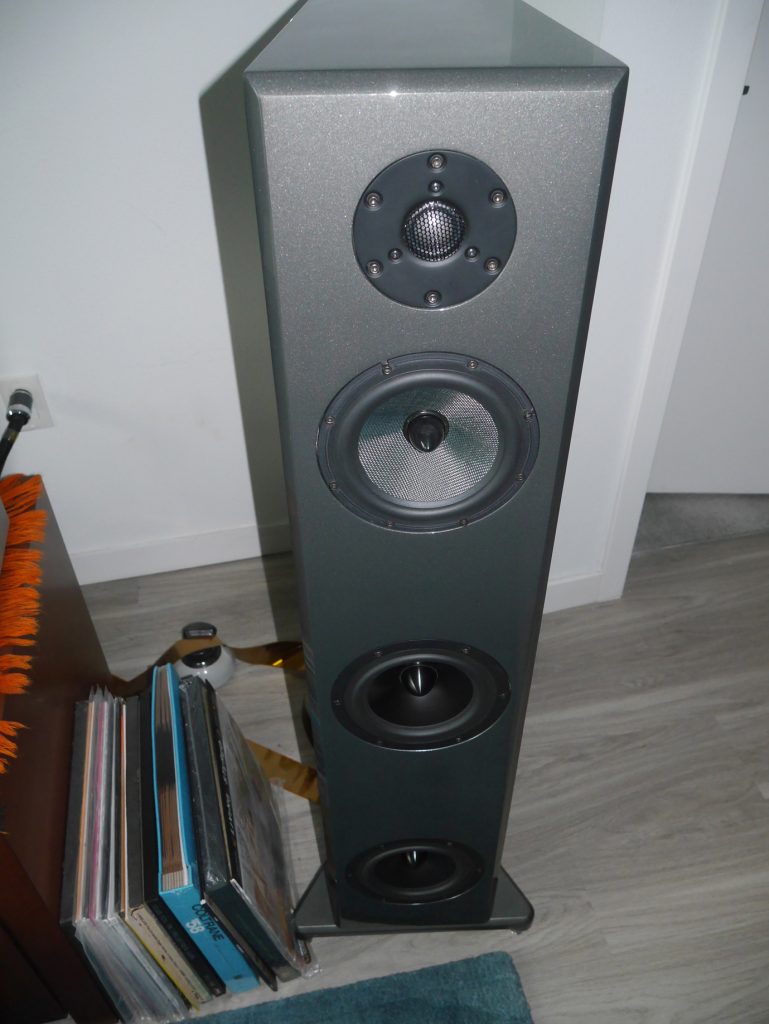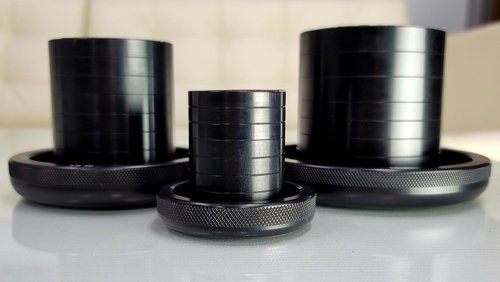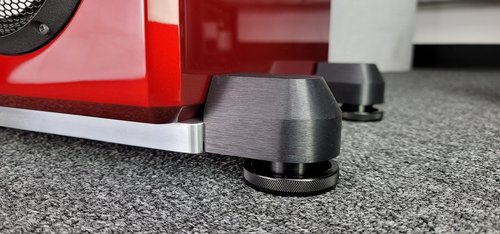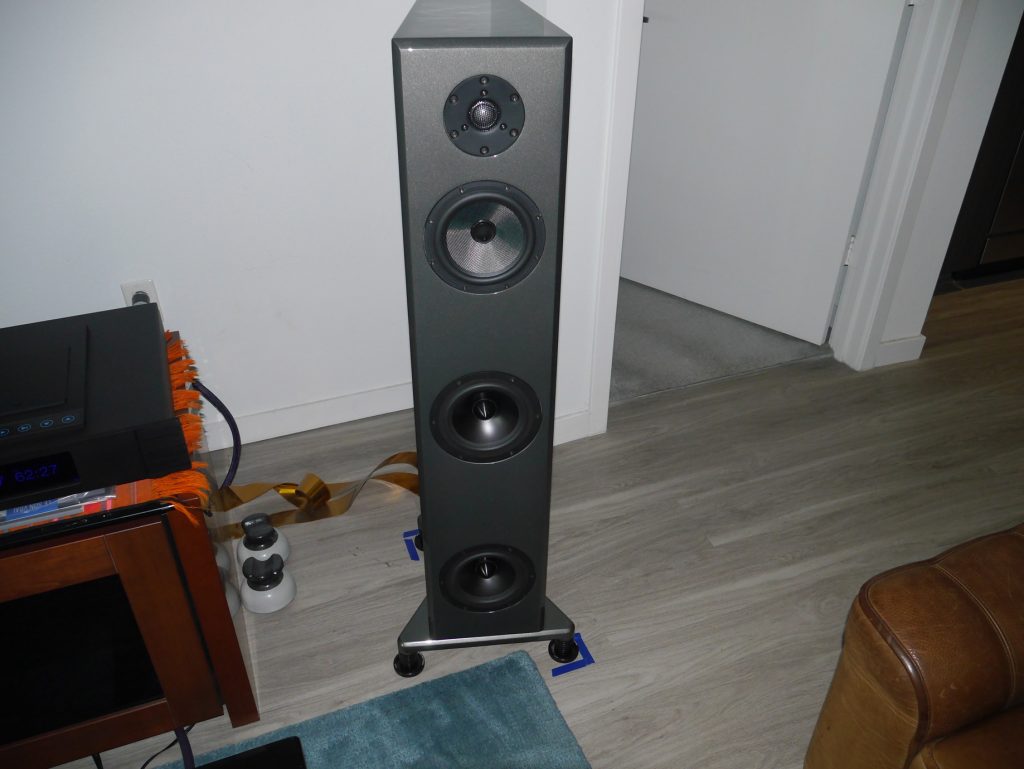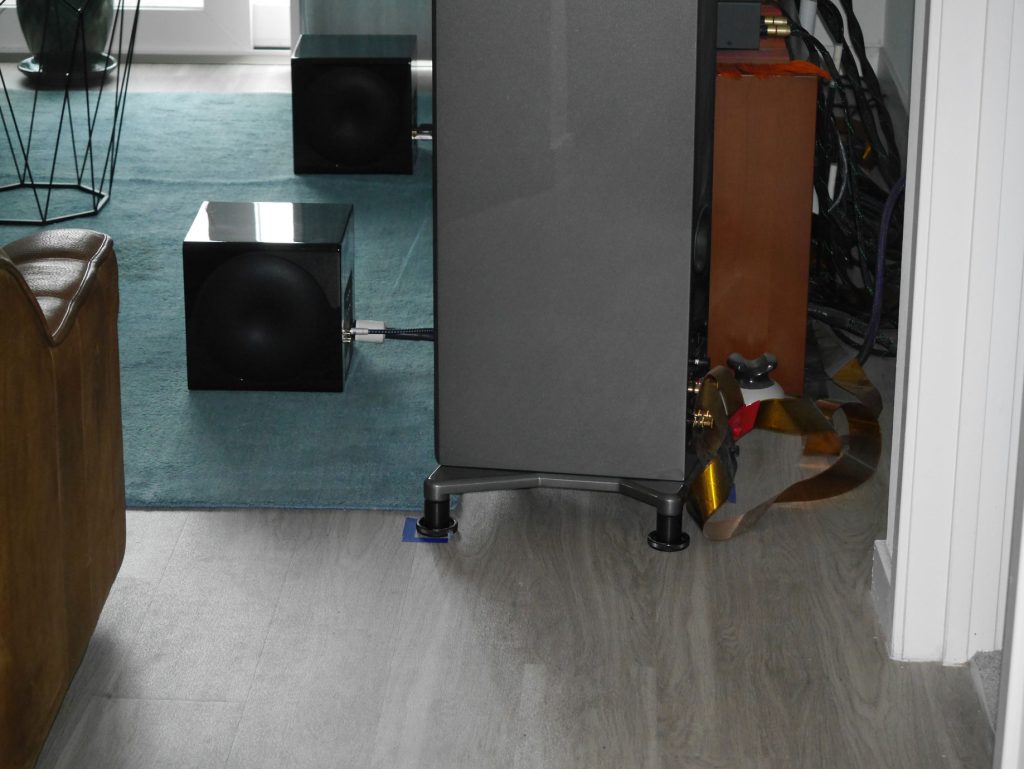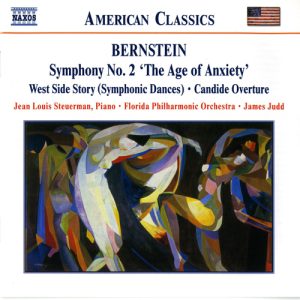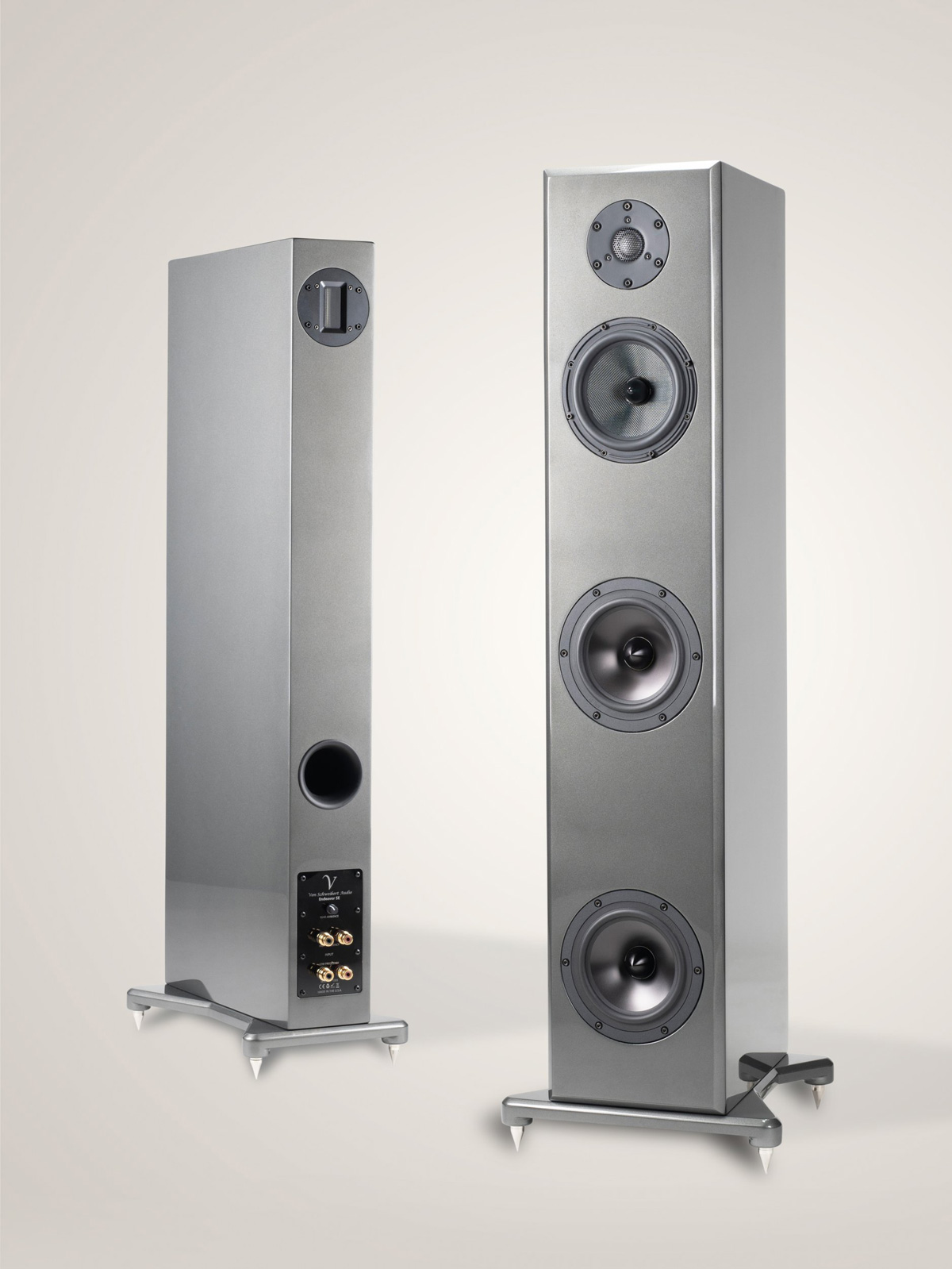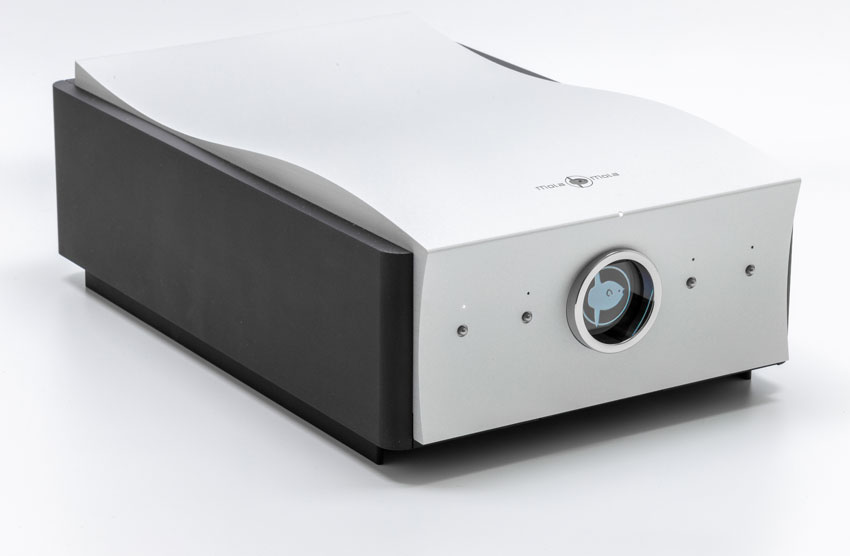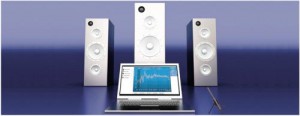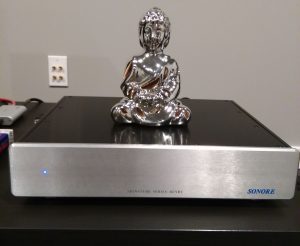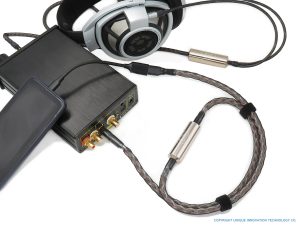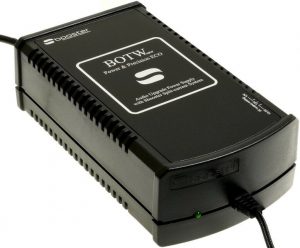Back Up the Loudspeaker Evolutionary Ladder
Last summer I waxed enthusiastically about Von Schweikert Audio's remarkable Endeavor Special Edition (ESE) loudspeakers (HERE), one of the finest components to have graced my home during my many years as a reviewer. Compact in dimensions (an important consideration here at the Lounge), blessed with first-rate fit and finish, and imbued with music-making capabilities far beyond what its reasonable (but not insignificant price - $26K the pair) would otherwise suggest, I adopted the ESE as my new reference soon after my review posted online.
My considerable praise notwithstanding, one aspect of the ESE's sonic performance left me scratching my head, namely what I felt was the speaker's tendency, at least in my small room, to bloom a bit too richly in the bottom register, this along with a concomitant loss in bass speed, pitch precision, and ultimate impact. I said as much in my otherwise glowing review, but left open the very real possibility that what I had experienced wasn't the inherent sound of the speakers, but instead the result of a room-induced coloration.
Not long after my review posted, I got a call from Damon Von Schweikert, VSA's head-honcho and the son of the late Albert Von Schweikert, thanking me for writing what he felt was a very even-handed assessment, and to gauge my interest in reviewing a new company product, this time an accessory, not a speaker. Having heard from a few birds on the wire, including Damon himself, that VSA planned to introduce to the market a new loudspeaker isolation device, I readily agreed.
Less than a week later, a VSA-sourced box arrived bearing the goods: the company's new Center Stage2 "LS" Series Loudspeaker Footers. Engineered by the talented folks at Critical Mass Systems, and produced under license by VSA, the Center Stage2 (CS2) footers replace the well-designed spike assembly typically provided with VSA speakers. Readers familiar with the celebrated Center Stage2 footers that CMS developed a few years back as vibration management devices (about which more to follow) to place underneath audio electronics of all sorts (recently upgraded to the Center Stage2M model) will almost certainly recognize the similar form-factor and thinking behind the CS2s.
While outwardly similar in form to the Center Stage2M footers, the CS2 devices depart from their brethren visually and engineering-wise. Unlike the puck-like Center Stage2M footers, the CS2s feature a disc-like structure attached to the bottom of each puck assembly, the latter highlighted by CNC-machined striations that, apart from looking great, also (likely) break up footer surface resonant modes. What feels like a ball-bearing assembly of some sort, no doubt a central design feature of the footer, links puck to disc. The combined footer (puck and disc) "wobbles" when placed in the palm of your hand but becomes a rigid vibration-suppressing structure when compressed by the weight of the attached speaker.
Unbeknownst to me when I agreed to do the review, I learned after visiting the VSA and CMS webpages that the engineering inspiration behind the footers built on "advancements [CMS] knew worked well with loudspeakers." Lessons from the material science, constrained layer damping, and noise reduction arenas all inspired the design, execution, and form of the footers. And like the physician's Hippocratic Oath "do no harm," the CMS team adopted a similar overarching mantra: to eliminate, where possible, vibration-induced distortions while leaving undisturbed the life, energy, and dynamism that makes recorded music come to life in the right systems.
According to CMS, the footers "mitigate vibration coming up from the surface below them. Second, they cancel out their own noise. This very difficult accomplishment ensures truth to source material and truth to component engineering design. Third, they transfer entropy out of the component. This feature requires time and is the reason for the extended settling process."
One salient feature that I discovered while researching the product was the dearth of technical information on both the VSA and Critical Mass System websites. I therefore reached out to CMS's head honcho, Joe Lavrencik, who provided me with a slew of design insights via a series of email exchanges and a fascinating phone conversation. Joe began by dispelling a commonly held (and widely disseminated) belief in high end circles that designers can somehow isolate components from the ambient environments wherein they operate. Joe described this theory as disappointingly misleading and, in his own words, "profoundly false." He stressed in his email to me that "[t]here is no such thing as isolation in a hobby that requires the release of vibration into a confined space as a prerequisite for its existence. Music is sound and sound is vibration."
According to Joe, "vibration is everywhere in the listening [room] and it permeates into every audio component in that space. This unavoidable circumstance is something we all seem to know and [unknow] at the same time. The other sad disappointment to me is that support-system-technology is the laggard of our industry. I marvel at and heartily applaud the constant technological advancements in electronics, loudspeakers, turntables, cabling etc., and at the same time, grimace at the… sinful tendency of "rack" companies to spit out some new version of an old, tired, outdated and demonstrably ineffective version of a disproven concept. I try not to do this."
Starting from the core proposition that we can only channel or redirect vibrational energy, not isolate it, Joe stresses the need to grasp the physics that ultimately drive what he sees as "both the problem and the solution" to effective vibration management. "In simplest terms" he writes, "loudspeakers create vibrations that permeate into components with mass and dimension composed of materials which pass, store, and amplify mechanical energy. The useful mechanical energy is that which enters our auditory canal and perhaps jiggles the feet and pounds the chest, but beyond that, the vibration is not useful. It is problematic excess energy."
Joe expanded on this vibration-manipulation theme by noting that if we accept "the proposition that [a] given vibration is present in excess, and this excess energy cannot be eliminated, [that] vibration can be (1) manipulated, (2) managed and (3) exploited. The materials we use to (1) manipulate vibration are alloys of aluminum, copper, tungsten carbide and titanium." The unique design architecture that CMS employs, the chosen materials utilized, all coupled with their respective elasticities and thin rod moments of inertia yield the results that you and I hear when we use the footers.
In this tightly managed design universe, Joe stressed that "everything does something" and that the materials used in the footers are the only substances that he has found which gift the unique sonic results that I note in the review. As I described at the start of this review, the outer shell of the LS foot wobbles in hand. However, under the loudspeaker load, "the outer aluminum alloy shell rests on an inner stalk of a precisely dimensioned sequence of tungsten carbide alloy, aluminum alloy and titanium alloy. According to Joe, vibrations pass through these materials in both directions depending on the location of the predominant accumulating energy. In this way, the vibrations are managed or channeled to minimize harmful interactions, not isolated as that term is widely used. Because of this unique material arrangement, vibrations cannot travel from floor to loudspeaker or from loudspeaker to floor without passing through the inner material footer stalk bi-directionally.
Through the controlled management of these vibrations via the tungsten carbide alloy/aluminum alloy/titanium alloy inner stalk, the footers can manipulate vibration resonance points to minimize sonic degradation. Again, the emphasis here is on vibration management, not isolation. Vibrations are never allowed to resonate randomly or chaotically (i.e., entropically), but instead are contoured through the "stalk" to achieve the desired sonic effect, translating to my ears as drastically improved top-to-bottom spatial definition, enhanced instrumental and vocal tonality, and significantly improved bass definition and extension.
One final point that Joe made (something echoed in my earlier conversations with Leif and Damon): the gaskets in the LS 0.8, LS 1.0, and the LS 1.5 are all dimensionally different and executed such that the sonic qualities that [one hears] in the 0.8 increase as you move up the line. "Each array of gaskets is calculated to [the] thousandths and 10/thousands of an inch with respect to the surface area of the outer shell and dimensions and mass of the foot." The resulting improvements in extension, spatial expansiveness, and timbral expressiveness flow directly from the precision of these calculations and applications.
For readers interested in how this technology functions sonically when used with front-end electronics and sources, you can read what our own Greg Weaver, the Audio Analyst©, earlier reported in his 2018 review of the then newly upgraded CMS CenterStage2 footers (HERE). Greg's excellent review is worth seeking out both for his superbly concise distillation of the science behind the footer design and for the perceptive sonic conclusions he draws after hearing the footers in his system, conclusions that track virtually (and eerily) in lockstep with my own.
One final point that should come as welcome news for music lovers weary of accessories designed exclusively for a particular brand or label: the VSA footers are available for both VSA speakers and those manufactured by other firms. Kudos to VSA for making such a wise marketing and business decision. These remarkable devices come in three sizes, the 0.8 model that I used for speakers under 200 lbs., the 1.0 model for speakers weighing up to a whopping 800 lbs., and the massive 1.5 model for super-heavyweight floor standers that weigh up to 1600 lbs. (per speaker).
Getting Off on the Right Foot
Attaching the footers involved removing the speaker wire connections then turning each speaker on its head (onto a soft carpeted floor so as not to mar the lovely paint finish, always with white cotton gloves). I then removed the factory-supplied spike assemblies and attached the new footers. Threaded titanium adapters screw snugly into the top of each footer puck and thence into the pre-drilled spike channels on the base of my ESE plinths. As part of its savvy "sell to anyone" marketing philosophy, VSA will manufacture threaded adapters to fit your chosen speaker's unique mounting specifications.
When mounted to the ESE plinth, the footers cut a handsome, all business profile.
So, where does all this vibration-suppressing, entropy-reducing, de-coupling obsessed, "cute as a bug" accessorizing take us sonically? Well, if my experiences are any indication, and depending on your speaker of choice, very nearly to the mountaintop, as far as I can tell. From the moment I replaced the stock spikes with the new CS2 footers, the sonic portrait that my broken-in pair of ESEs rendered transformed, and always for the better. Mind you, Damon had earlier warned that I would experience that expected initial moment of sonic improvement, however marginal, followed by sonic ups and downs. By "up and down," he meant that I should expect the speaker to sound a bit ragged and unfocused for a week or so as the footers settled in, even as I noticed slight improvements across any given performance vector over time.
The Win-Win Scenario
Much to my surprise, the much-ballyhooed sonic downsides that Damon foretold never materialized. Instead, I immediately noticed key performance upticks along two key vectors: in overall bass quality and in sound staging and imaging. In my ESE review, I described the speaker as having an ever-so-slightly softened lower end lacking a bit in overall speed and precision, even while praising the speaker's impressive low-end reach and weight. Amazingly, with the footers in place the ESE's bass performance transformed from the slightly soft and ill-defined initial profile that I reported earlier to something approaching the speed, pitch-precision, and focus of a very fine sealed box model.
Oh, the superb low-end reach and power that I adored remained, but world-class focus, impressive tonality, and quick-as-lightening transient precision now bolstered sheer grunt. On the beautifully recorded 1999 Columbia CD reissue of Charlie Mingus's masterpiece Mingus Ah Um (Columbia CK 65512), the pre-footer sound veered ever-so-slightly to the warm and fuzzy side of the spectrum, especially when transcribed by my slightly warm and fuzzy sounding Marantz SACD player. With the footers in place, Booker Ervin's earthy tenor on Goodbye Pork Pie Hat, underscored brilliantly by Mingus's probing bass lines, snapped into focus tonally. Transient attack and intelligibility improved markedly. Mingus's bass now bobbed and weaved with superb tonal focus and remarkable precision. Oh my!
A personal favorite recording, a silver disc that featured prominently in my original ESE review, Naxos Record's well-recorded symphonic blockbuster, the Peter McGrath engineered Candide Overture from the Bernstein: Symphony No. 2 - West Side Story (Naxos 8.559099) CD, displayed all the bloom and room-inflating power, life, and impact that I admired earlier. Only now, the low-end eruption of sound from the lower brass and timpani during the opening bars of the Overture exploded with both "center-of-the-earth" impact and reach and heightened focus, pitch precision, and speed of attack. The difference was roughly the equivalent of switching from a very good but slightly soft (in the bottom-end) ported floor-stander to an optimally aligned sealed box enclosure.
I would even go so far as to argue that the footer-equipped ESE sounds like an altogether better and more refined version of its "footer-less" self.
That last point bears special mention insofar as the footers in no way dilute the things that the ESE does well (and in some cases, as with imaging and scaling, extraordinarily well). Rather, the footers usefully mitigate against the speaker's slight but noticeable tendency to sound a tad underdamped in the bass (in my room) by bringing the bottom end into tighter focus, but without sacrificing the impressive weight, scaling, and low-end momentum that makes every VSA model that I have come across sound that little bit more real and natural in the bass than most other speakers.
Imaging and sound staging performance undergo similar transformations. The stock ESE crafts soundscapes of remarkable cohesion, layering, and overall dimensionality. But insert the new CS2 footers in place of the stock spikes and the aural image acquires that unmistakable "reach out and touch it" tactility, instruments and voices seemingly materializing out of thin air precisely placed in a wide and deep sound field. What I found most engaging was the sensational sense of instrumental "action" that unfolded within the recorded soundscape. Again, with footers in place, I could hear how instruments and voices "popped" in and out of the stage as this or that performer began and ended a musical line, each surrounded by a pocket of ambient air that enhanced bloom and, paradoxically, the sense of heightened image specificity.
Lastly, the footers seem to settle and relax the overall sonic performance profile on every recording. Tonality acquires slightly better focus, transients sharper and cleaner initial attacks, this followed (usefully) by more generous sustains. By the same token, the performance upticks in these areas, while considerable, do not rise to quite the same exalted level heard in the bass and with respect to imaging and staging. Still, and on balance, the footers do what few accessories that I have encountered do: elevate the sound of the associated audio component to an altogether higher realm.
Parting Thoughts
If the ESE sounded fantastic sans footers, the footer-equipped device blossoms into an undeniable sonic reference, one equally adept at telling you what each upstream source and amplification component can and cannot do, while simultaneously enhancing the sheer sense of discovery, fun, and excitement that lies at the heart of the VSA speaker experience. The only downside that I can see is the rather steep price of entry. At a MSRP of $650 per footer (4 feet recommended per loudspeaker cabinet), the "LS" 0.8s don't exactly qualify as affordable accessories/upgrades. Nevertheless, the performance gains justify the slightly higher than bargain tariff, IMHO.
If you have a spare $5200 laying around (for a set of 8), these come very highly recommended and with no sonic downsides.
Specifications
- LS 0.8 – Max operational weight of a loudspeaker cabinet 200 lbs./ 91 Kilos or less
- 4 feet recommended per loudspeaker cabinet
Audio Center Stage2 "LS" 0.8 Series Loudspeaker Footers
Retail: $650 each ($5200.00 for a set of 8)
Von Schweikert Audio
1040-A Northgate St.
Riverside, CA 92507
951.682.0706
https://www.vonschweikert.com/
Critical Mass Systems
http://www.criticalmasssystems.com/




